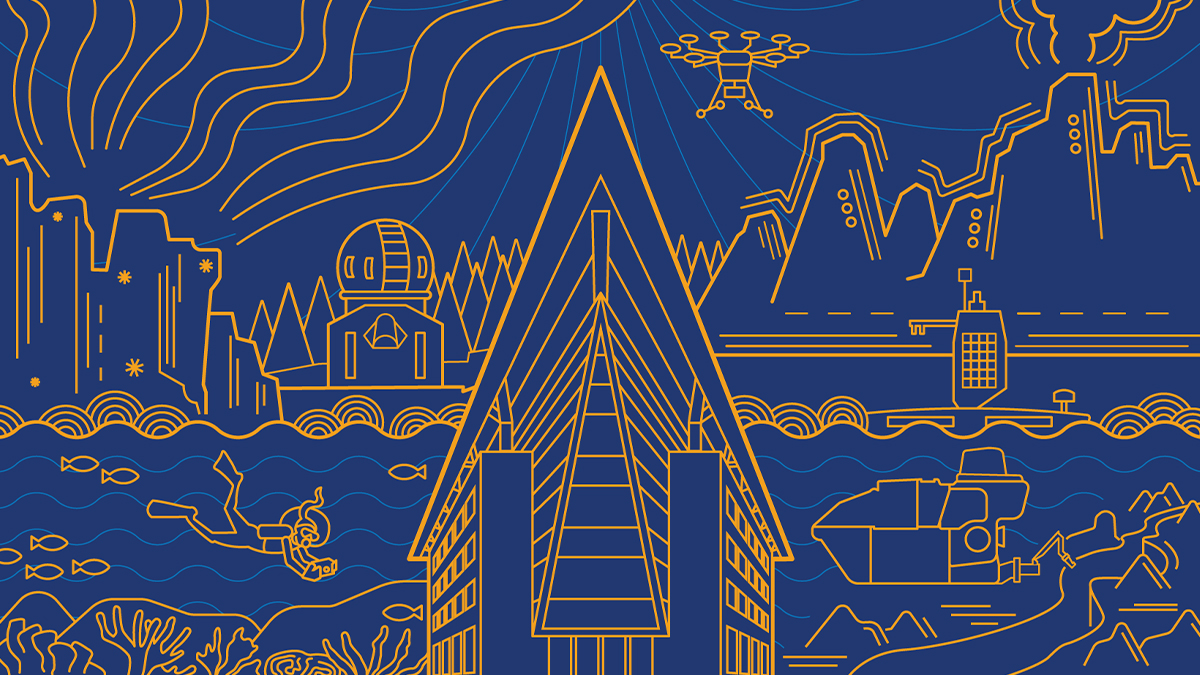As thousands of scientists bundle up for AGU’s Fall Meeting 2022 in Chicago, we at Eos are reminded that “Science Leads the Future” and the future is science. This future, informed by the past and guided by the present, will be characterized by the contributions of individuals, communities, and coalitions with clear goals and practical benchmarks for achieving them.
The Past
The future of effectively monitoring permafrost in the Arctic has its roots in ice ages past, as illuminated by the unlikely friendship forged between an American scientist and Russian researcher in the 1990s. Learn more about Siberia, a mammoth named Willy, and post-Soviet friendships from Jenessa Duncombe in the latest edition of her series The Curve.
The predicted impact of greenhouse gas emissions hasn’t changed much in a century, John Aber and Scott V. Ollinger remind us in “Simpler Presentations of Climate Change.” They offer suggestions for clear, data-driven outlines to get the message across.
The Present
The Cold War fear of nuclear conflict has, unfortunately, resurfaced in the present. In “Geoscientists Can Help Reduce the Threat of Nuclear Weapons,” Alan Robock and Stewart C. Prager outline steps scientists can take to reduce the likelihood of such conflict. In the end, they believe, “the ultimate solution to the problem of nuclear weapons is to ban them globally.”
At the onset of the COVID-19 pandemic, aerosol scientists were the sentinels warning of the airborne quality of the virus. The way policymakers and the public responded to these researchers framed the world we live in today, and the one we are building for the future. Richard J. Sima’s “Indoor Air Pollution in the Time of Coronavirus” is a study in science, frustration, and, ultimately, hope.
The Future
An early diagnosis is also the hope of Matthieu Chartier’s “The Alarming Rise of Predatory Conferences.” Chartier offers suggestions to help the community secure a more trusted, transparent future.
Grassroots organizations are acting today to redefine university boards in the future. In “Alumni Push Universities Forward on Climate,” Kimberly M. S. Cartier describes the efforts of Harvard Forward, Penn State Forward, and Yale Forward as these alumni groups organized to elect members to the powerful boards that decide how universities respond to climate change.
“Are We Entering the Golden Age of Climate Modeling?” asks Mark Betancourt in his analysis of exascale computing and the European Union’s Destination Earth project. Exascale supercomputers, capable of a quintillion (1018) operations per second, may revolutionize (resolution-ize?) the way scientists model and twin a diverse array of systems that contribute to Earth’s climate. The new models may also help communities develop adaptation and mitigation strategies.
Finally, a group of scientists encourages their peers to give “Credit Where Credit Is Due” in an opinion from Mark A. Parsons, Daniel S. Katz, Madison Langseth, Hampapuram Ramapriyan, and Sarah Ramdeen. The traditional protocols surrounding academic citation and credit are outdated, they argue, and what is needed instead is a “wider designation of credit everywhere it is due.”
From Arctic fungi to academic footnotes, change can be a slow process, but our community can implement some steps immediately. Science leads the future, and the future is now.
—Caryl-Sue Micalizio, Editor in Chief


